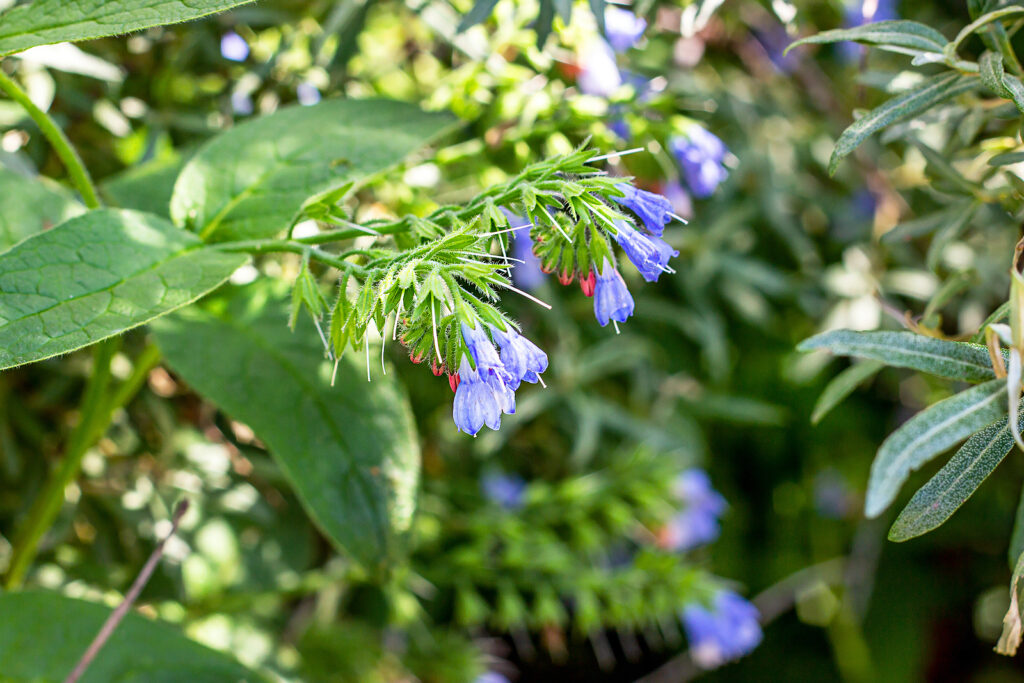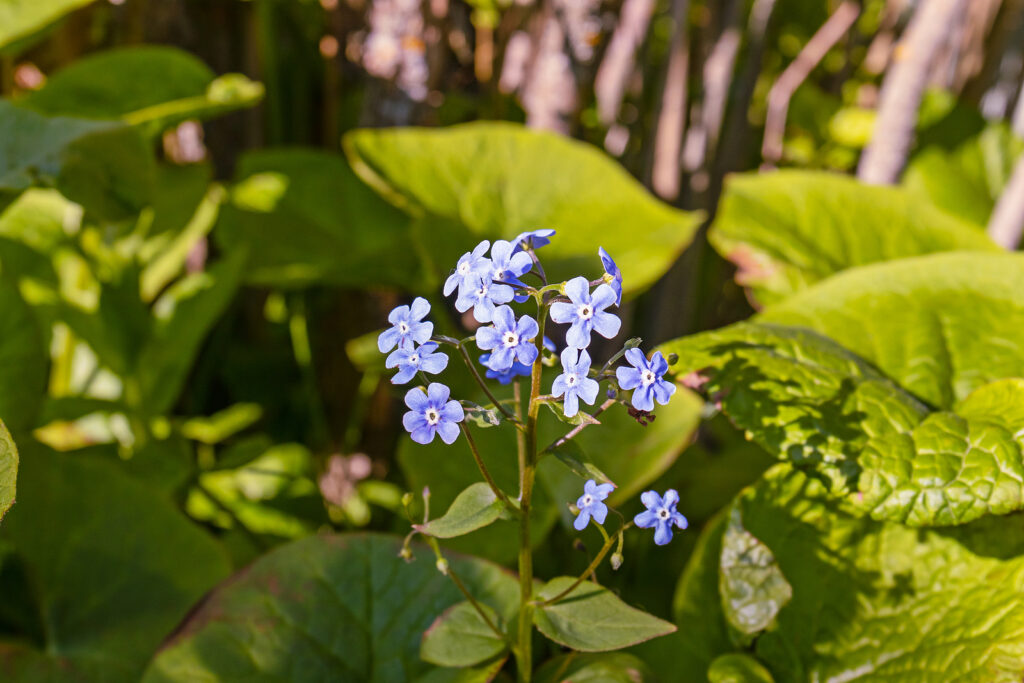Brunnera produces sprays of small blue or white flowers nestled among handsome, coarse leaves in spring. The blooms look like tiny forget-me-nots.
Brunnera is a hardy perennial that make a good ground cover. It grows and flowers best in dappled shade in hot summer regions. In cool-summer regions it can be planted in full sun.
Brunnera goes dormant during droughty weather but will reappear the following spring. Brunnera readily self-sows.
Plant Brunnera beneath high-branched trees or in the shade of shrubs.

Get to know Brunnera
- Plant type: Rhizomatous perennial
- Growing zones and range: Zones 3 to 8
- Hardiness: Hardy to -35°F (-37°C); plants go dormant during droughty weather.
- Height and width: Grows to 18 inches (45cm) tall
- Foliage: Dark green, ovate to heart-shaped leaves 3 to 4 inches (7.6-10cm) wide; variegated forms are available
- Flowers: Airy clusters of tiny clear blue forget-me-not flowers
- Flower colors: Blue with yellow centers; white flowers appear rarely
- Bloom time: Spring
- Uses: Informal ground cover under deciduous trees; filler between newly planted evergreen shrubs
- Common name: Brunnera, Siberian bugloss
- Botanical name: Brunnera
- Family name: Boraginaceae
- Origin: Eastern Europe and Northwest Asia
Where to plant Brunnera
- Plant Brunnera in dappled shade in hot summer regions; plant in full sun in cool-summer regions.
- Plant Brunnera in humus-rich, well-drained, moisture-retentive soil.
Brunnera uses to companions
- Grow Brunnera in shade or woodland gardens and waterside plantings.
- Good companions for Brunnera include Bergenia, Doronicum, Geum, Thalictrum, Trollius.
When to plant Brunnera
- Set Brunnera outdoors in spring or autumn.

Planting and spacing Brunnera
- Space Brunnera 12 to 18 inches (30-45cm) apart.
How to water and feed Brunnera
- Keep the soil evenly moist for best flowering.
- Fertilize Brunnera with an all-purpose fertilizer in spring.
Brunnera care
- Remove faded flowers and foliage.
- Avoid disturbing the roots.
Brunnera pests and diseases
- Brunnera is usually pest free.
Brunnera propagation
- Brunnera freely self-sows once established.
- Brunnera seeds germinate in 4 to 12 weeks at 60°F (16°C). Seeds can be difficult to germinate; freeze them before sowing.
- Divide clumps in autumn.
- Take root cuttings in late winter or early spring.
Brunnera varieties to grow
There are three species in the genus only the following is planted in gardens:
- Brunnera macrophylla, Siberian bugloss: Grow 12 to 18 inches (30-45cm) tall and wide; 6 to 8 inch long coarse, heart-shaped leaves; bears clusters of tiny blue flowers in mid to late spring; ‘Dawson’s White’ has creamy leaf edges. ‘Langrees’ has silver spotted leaves.



